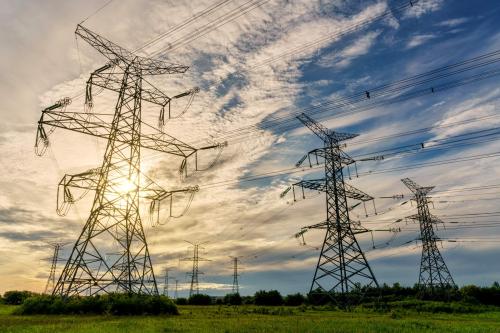The reverberations of the shale energy revolution in the United States, which helped the U.S. surpass Russia to become the world’s largest natural gas producer in 2009 and may result in the U.S. displacing Saudi Arabia as the world’s largest oil producer around 2020, are already being felt in China.[1] The dramatic change in the energy fortunes of the U.S. – the country is poised to shift from a net natural gas importer to a net natural gas exporter by 2020 and its dependence on oil imports is projected to fall from 60 percent in 2005 to 34 percent in 2019 – is also beginning to reshape those of China.[2] One change occurred in September, when the U.S. passed the title of world’s largest net oil importer, a crown it had worn since the mid-1970s, to China. Five other ways in which the surge in U.S. shale gas and shale oil production is starting to alter China’s energy landscape are discussed below.
1. It has generated enormous interest in China about whether the U.S. shale revolution can be exported to China.
China has considerable shale resources on paper. According to the U.S. Energy Information Administration, China’s technically recoverable shale gas resources are the largest in the world (and almost 50 percent greater than those of the U.S.), and its technically recoverable shale oil resources are the world’s third largest (behind Russia and the U.S.).[3] Moreover, three of China’s basins appear to contain marine shale, like those in the U.S., which is more easily fractured than non-marine shale. However, there are several above-ground challenges to the rapid development of China’s shale resources, the most formidable of which is the structure of China’s oil industry. The shale revolution in the United States was launched by a large number of small independent operators driven by a desire to strike it rich.[4] In contrast, China’s onshore oil industry is dominated by two state-owned behemoths, CNPC and Sinopec, which are motivated by factors other than greed. In addition, CNPC, which has exposure to some of the country’s most promising shale gas resources, has other priorities in the short-term. The company is more interested in producing its large domestic conventional natural gas reserves and marketing expensive pipeline and LNG imports.[5]
2. It has created more opportunities for China’s national oil companies (NOCs) to acquire upstream (exploration and production) assets abroad.
Ten years ago, Chinese oil executives regarded the international mergers and acquisitions (M&A) landscape to be rather bleak. They felt disadvantaged by their relatively late arrival to cross-border M&A. In their view, the best assets were in the hands of foreign governments that did not allow foreign equity participation or the major international oil companies. Consequently, they were largely left with higher-quality assets in higher-risk countries or lower-quality assets in lower-risk countries. As Fu Chengyu observed in 2004, when he was the CEO of China National Offshore Oil Corporation (CNOOC), “It’s actually not easy for us to find projects. The world oil industry has a one hundred year history. The good projects are already taken.”[6]
Today, Chinese oil executives are probably singing a different tune for two reasons. First, the U.S. oil and natural gas boom has created investment opportunities for China’s NOCs in the United States. Since 2010, China’s NOCs have spent more than $10 billion to acquire upstream assets in the United States, most of which has been spent on unconventional projects. These investments have helped make North America a key geographic focal point of the international M&A of China’s NOCs. According to a recent Wall Street Journal article, since 2008, China’s NOCs have spent more money to acquire assets in North America ($44.2 billion) than any other region of the world.[7]
Second, as U.S. oil companies sell assets abroad to earn money to invest in shale energy development in the United States, there are more assets available for China’s NOCs to buy in third countries. A recent example of this is Conoco Phillips’ sale of its stake in consortium developing Kazakhstan’s giant Kashagan oil field, which is now in the hands of China National Petroleum Corporation (CNPC). Moreover, as U.S. and other oil companies increasingly focus on investing in the American upstream, they probably are not competing for overseas assets that they otherwise might have pursued. For example, Exxon Mobil, Chevron, BP and BG did not participate in the recent auction for rights to develop Libra, Brazil’s largest offshore oil discovery, while both CNPC and CNOOC are members of the winning consortium. In the absence of the U.S. shale energy revolution, the four international companies might not have sat on the sidelines.
3. It limits the opportunities for China’s NOCs to expand their activities in Iran.
One of the major geopolitical benefits of the U.S. shale energy revolution is that it provides China’s NOCs with a powerful incentive to curb their business with Iran. This is especially true in cases where a Chinese oil company seeks a controlling stake in a U.S. energy company, such as CNOOC’s recent acquisition of Nexen’s Gulf of Mexico subsidiary. This is because any proposed acquisition of a U.S. company that would result in foreign control of a U.S. business should be reviewed by the Committee on Foreign Investment in the United States (CFIUS), which screens proposed investments for national security risks. CFIUS is almost certain to ask about the nature of the acquiring company’s activities in Iran and to make approval of their proposed U.S. acquisition contingent upon a plan to wind down their business in Iran. The fact that CNOOC had largely extricated itself from Iran at the time of its offer to buy Nexen probably contributed to CFIUS’s decision to give the green light to CNOOC and Nexen. In short, the more Chinese oil companies invest in the U.S., the more leverage the U.S. may have over their activities in Iran.
4. It gives China more leverage in natural gas pipeline negotiations with Russia.
The U.S. shale energy revolution has been bad news for Russia. Not only is demand for natural gas growing slowly in its largest customer, Europe, but Europeans now have alternatives to Russian pipeline gas in the form of liquefied natural gas (LNG) originally intended for the United States. Consequently, China, where natural gas demand is surging, looms ever larger as a source of future security of demand for Russia, a fact not lost on the Chinese. China and Russia have been negotiating a cross-border natural gas pipeline since the 1990s but have been deadlocked on price for several years. While China can take or leave the proposed pipeline (due to the availability of alternative sources of supply, primarily in the form of LNG imports), it would prefer to take it for two reasons. First, the pipeline would deliver large volumes of natural gas to the important northeast China natural gas market.[8] Second, the large volume of pipeline imports would further the apparent objective of CNPC – the Chinese oil company involved in the negotiations with the Russians – of expanding its portfolio of expensive imported natural gas to put more pressure on the Chinese government to continue to maintain higher domestic natural gas prices.[9]
It has sparked conversations in China about the roles of both the United States and China in ensuring the free flow of oil from the Persian Gulf in a world in which the U.S. in importing little or no oil from the region and China is importing large volumes.
The genesis of these discussions are projections like those contained in the International Energy Agency’s World Energy Outlook 2012, which show that in 2035, the U.S. will be importing just 100,000 b/d of oil from the Middle East while China will be importing 6.7 million b/d.[10] As a result, analysts in Beijing, like their counterparts in Washington and other world capitals, are debating whether declining U.S. oil imports from the Persian Gulf, combined with budgetary woes, will prompt Washington to substantially reduce its military commitment to region. The Chinese have also started to think about what steps China and other major Asian buyers of Persian Gulf oil might eventually take to help ensure the uninterrupted flow of oil from the Persian Gulf.
[1] Stephen Bierman, “U.S. Overtakes Russia as Biggest Natural Gas Producer (Updated),” Bloomberg, January 12, 2010, http://www.bloomberg.com/apps/news?pid=newsarchive&sid=aH0jhcEHz07s; and International Energy Agency, World Energy Outlook 2012 (Paris: OECD/IEA, 2012), p. 23.
[2] U.S. Energy Information Administration, Annual Energy Outlook 2013, April 2013, pp. 3 and 83, http://www.eia.gov/forecasts/aeo/pdf/0383(2013).pdf.
[3] U.S. Energy Information Administration, Technically Recoverable Shale Oil and Shale Gas Resources: An Assessment of 137 Shale Formations in 41 Countries Outside of the United States, June 2013, p. 10, http://www.eia.gov/analysis/studies/worldshalegas/pdf/overview.pdf.
[4] Edward L. Morse, “Energy Markets in Transformation: There’s a clear sustainable, profitable future for global shale – at the right price,” Citi Research, November 2013, slides 7-8.
[5] Zhou Jiping, “The Rapidly Growing World and Chinese Natural Gas Markets,” remarks at the 25th World Gas Conference, Kuala Lumpur, Malaysia, June 7, 2012, http://www.cnpc.com.cn/en/press/speeches/The_Rapidly_Growing_World_and_Chinese_Natural_Gas_Markets.shtml; and “Understanding CNPC-PetroChina’s appetite for rising gas imports,” China Gas & Power Service Insight, Wood Mackenzie, August 2013, p. 2.
[6]Luo Qiping, “Fu Chengyu: ‘shenyan zouchuqu’ de zhengzhi jingjixue” (“Fu Chengyu: The political economy of ‘cautiously going out’”), 21shiji jingji daobao (21st Century Business Herald), December 29, 2004, http://www.nanfangdaily.com.cn/southnews/zt/2004nztk/21ren/200412290045.asp.
[7] Russell Gold and Chester Dawson, “Chinese Energy Deals Focus on North America: State-owned Firms Seek Secure Supplies, Advanced Technology,” Wall Street Journal, October 25, 2013, http://online.wsj.com/news/articles/SB10001424052702304682504579153350379089082?KEYWORDS=China+oil
[8] Interview, industry analyst, Beijing, China, September 27, 2013.
[9] Wood Mackenzie, p. 3.
[10] International Energy Agency, pp. 78-80; and data provided by the International Energy Agency by email on May 29, 2013.



Commentary
Implications of the U.S. Shale Energy Revolution for China
November 8, 2013